| Universal Postal Union (UPI) | The Universal Postal Union will evaluate UPI for integrating the unified payment interface with cross-border remittances using a global postal network.
About Universal Postal Union (UPI):
|
| Ukraine Port of Odessa | Recently, Russia struck Ukraine’s port of Odesa with missiles ,a day after pulling out of a UN-backed Black Sea Grain Initiative.
About Odessa Sea Port:
|
| CRCS Sahara Portal |
|
Context:
The projections for national immunization coverage for 2022 from WHO and UNICEF have recently been made public.
Key Highlights:
Inclusion in India:
About Diphtheria, Pertussis and Tetanus(DPT)-
Universal Immunization Programme
|
| World Health Organization (WHO)
Formation: 7 April 1948 Type: United Nations specialized agency Headquarters: Geneva, Switzerland Parent organization: United Nations Economic and Social Council Mandate: to promote health and safety while helping the vulnerable worldwide. |
| United Nations International Children’s Emergency Fund(UNICEF)
Formation: 11 December 1946 Headquarters: New York City, New York, U.S. Parent organization: United Nations General Assembly Mandate: to advocate for the protection of children’s rights, to help meet their basic needs and to expand their opportunities to reach their full potential. |
News Source: The Hindu
Context: The merchandise exports shrank by 15.1 % in the first quarter of the current financial year. This is against the backdrop of a record feat of $450 billion of merchandise exports in the year 2022-23.
Trends for the last three months-In April and May, exports of goods slowed by 12.6% and 10.2%, respectively. However, with a 22% drop in June, they fell the most in 37 months. Last month’s total exports of $32.7 billion were the lowest since October 2022.
Reasons for the Dip in Exports:
Merchandise Exports Basket of India:
|
News Source- The Hindu.
Context:
What are the ”Bhoomi Samman” awards?
|
Significance:
Modernising Land Records-The Foundation of Governance:
Cooperative Federalism among the Center-States:
Digitization’s Effect on Land Records:
Increasing Government Programme Effectiveness:
Reaching Digitization Goals:
Wayforward for Land Digitisation-
News Source- PIB
Context:
Rudragiri hillock, unveils a fascinating combination of prehistoric rock paintings from the Mesolithic period and exquisite artwork from the Kakatiya dynasty
About Rudragiri Hillock:
Caves:
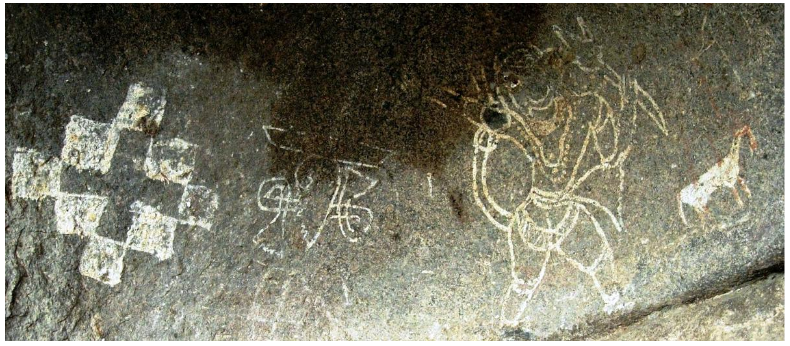 Image Credits: The Hindu
Image Credits: The Hindu
Mesolithic Era:
News Source: The Hindu
Context:
The Election Commission of India introduces digital time vouchers for political parties to avail airtime on Doordarshan and AIR.
About DigitalTime Voucher:
Significance:
Background:
News Source: PIB
Context: Recently, in July, 2023, all seven of Earth’s continents have experienced extraordinary extreme weather events.
About Extreme Weather Events

| Events | Description | Example |
| Heatwaves |
|
|
| Wildfire |
|
|
| Droughts |
|
|
| Cold Snaps |
|
|
| Tropical Cyclones |
|
|
| Torrential rains |
|
|
| Flood and Flash Flood |
|
|
Extreme Weather Events are influenced by many factors
Extreme Weather Events in India
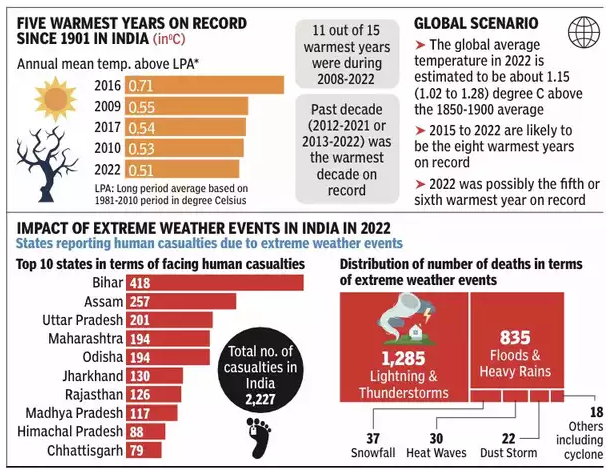 Image Credit: TOI
Image Credit: TOI
Way Forward
World Meteorological Organisation (WMO):
About India Meteorological Department (IMD)
|
News Source: The Hindu
Context:
What is multidimensional poverty?
Need of Multidimensional Approach:
Global Multidimensional Poverty Index (MPI):
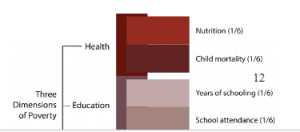
Global MPI Highlights with respect to India:
National Multidimensional Poverty Index by Niti Ayog:
Key highlights about the report:
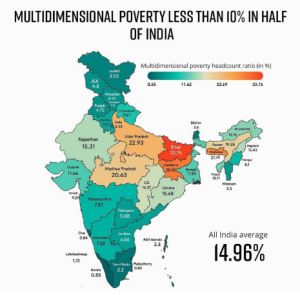 Fastest decline in Rural areas: rural areas witnessed the fastest decline in poverty from 32.59% to 19.28%, primarily due to decrease in the number of multidimensionally poor in States such as Bihar, Uttar Pradesh, Madhya Pradesh, Odisha, and Rajasthan.
Fastest decline in Rural areas: rural areas witnessed the fastest decline in poverty from 32.59% to 19.28%, primarily due to decrease in the number of multidimensionally poor in States such as Bihar, Uttar Pradesh, Madhya Pradesh, Odisha, and Rajasthan. Significant achievements:
Significance of national Multidimensional Poverty Index:
Way Forward:
Poverty Estimation in India:
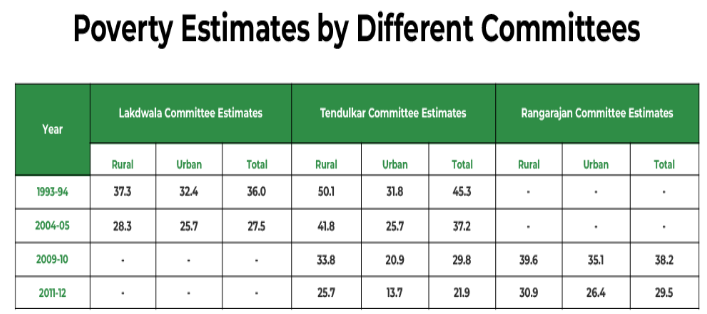
News Source: The Hindu
SC Verdict on Newsclick Shows Adherence to Due Pro...
Stay Invested: On Chabahar and India-Iran Relation...
Credit Rating Agencies, Impact on India’s De...
Catapulting Indian Biopharma Industry
Globalisation Under Threat, US Import Tariffs Have...
Global Report on Hypertension, Global Insights and...
<div class="new-fform">
</div>
